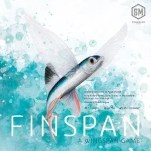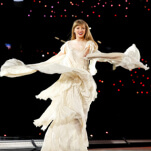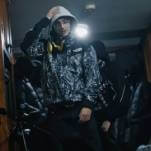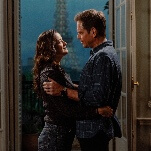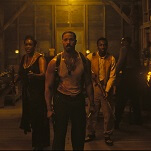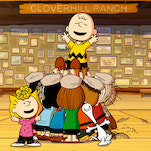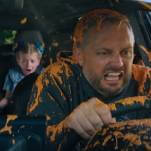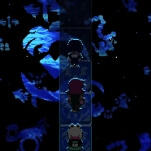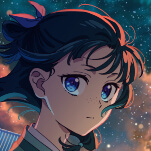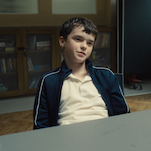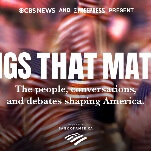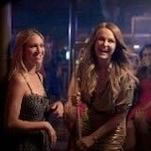Fantasy Zone’s daddy issues twist drags it back to bleak reality

I often try my best not to think about my absentee dad, a man who hasn’t tried to contact me since I was 11 years old. We didn’t have a rough relationship. I’d stay with him on weekends. We’d go to the beach boardwalk and walk around. He’d play an old Gorillaz cassette tape with the song “Clint Eastwood” on it, and I’d nod along, wishing I was as cool as Del The Funky Homosapien. Then it was crickets. There were no more phone calls, no more weekend excursions. My mom couldn’t ever articulate to me why he didn’t call anymore—but how could she? I was just a kid. One day, I found odd solace within an unlikely game protagonist, the adorable spaceship Opa-Opa of Fantasy Zone.
This Sega arcade classic was the cheeriest shoot-’em-up of all time, so adorable that it partially spawned a new sub-genre of similar “cute-’em-ups,” ever-scrolling shooters with gleeful aesthetics. “I wanted to make something bright, with a pop sensibility,” explained the game’s designer, Yoji Ishii, in an interview with Japan’s Shooting Gameside magazine. But after fighting through eight levels of vibrant cheeriness, Fantasy Zone unleashes its strangest quirk: a bleak ending with a daddy-issues twist.
In the first game, you eventually face the leader of the evil forces of Menon, an enemy planet that destroyed the interplanetary monetary system and threw the “Fantasy Zone” into turmoil. After an intense battle, Opa-Opa defeats the Menon leader, and learns that the ominous, similarly shaped ship is actually his own long lost father. Now carrying “mixed emotions,” Opa-Opa’s journey comes to a close. There’s “one burning question that will remain with him until his dying days,” the epilogue reads. “Was my victory really worth the price I had to pay?” Then, that’s it. The end. Opa-Opa accidentally killed his evil dad and feels really bad about it, despite the father figure never seeming to be around.
It’s a downer twist in a game that’s otherwise engineered to make the player feel good. Initially told by his boss to create a space-bound shoot-’em-up to rival Konami’s hit Gradius, Ishii decided to push back against expectations. “I doubted whether players would be interested in a mere knockoff,” he explained in his Shooting Gameside retrospective. “And personally, as a creator, I wanted to make something more colorful and showy.” So Ishii introduced Brazilian culture as an inspiration to his designers, and the hyper-colored exuberance of Fantasy Zone was born. Its creators married numerous cutesy elements together, like the cheerfully designed characters (enemies included), pastel-colored art, and a samba-inspired soundtrack by composer Hiroshi Kawaguchi. In crafting a striking arcade shooter like no one had ever seen, Sega orchestrated a classic.
That generous use of color has always been the central draw of Fantasy Zone and differentiated it from its shoot-’em-up peers. Mark Rothko, the great Russian-American abstract expressionist painter, once described color as “merely an instrument,” a tool for him to create specific emotions in the people who viewed his work. Ishii sought what was essentially the same goal with Fantasy Zone, but he aimed to evoke joy, rather than the theme of death that permeated Rothko’s work. So it’s strange that the game would swerve so drastically in its last moments via text exposition, even if the twist was allegedly intended to mock Empire Strikes Back’s “I am your father” moment. Besides a cursory explanation at the start of the game, Fantasy Zone goes plotless for its entirety, as most arcade games did back in the day. Then there’s suddenly this knife-turning realization at the conclusion. Opa-Opa’s difficult journey doesn’t end in relief, it ends with tragedy and internal conflict.


